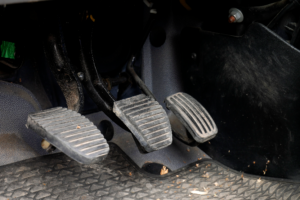You have certainly experienced distress when something lights up suddenly on your dashboard while you are driving. There are many lights in your car’s dashboard that can turn on without any warning. “Check Gauge” or “Check Gauges” light – what does it mean?
If you see the “Check Gauges” or “Check Gauge” light flash on your dashboard, one gauge or two are going out of range. It could be the engine oil gauge, brake fluid gauge, or the gauge for the car’s electrical system.
Don’t panic when you see the “Check Gauge” or “Check Gauges” light suddenly flashing on your dashboard. Just pull your car over the shoulder and stop. Then look over the gauges on the dashboard. There should be one gauge that is turned on. More often than not, that’s the warning that the “Check Gauge” is pointing out.
Read on to learn more about the Check Gauge light, what it means and what you need to do if you see it illuminated on your dashboard.
“Check Gauge” Light – What Does It Mean?
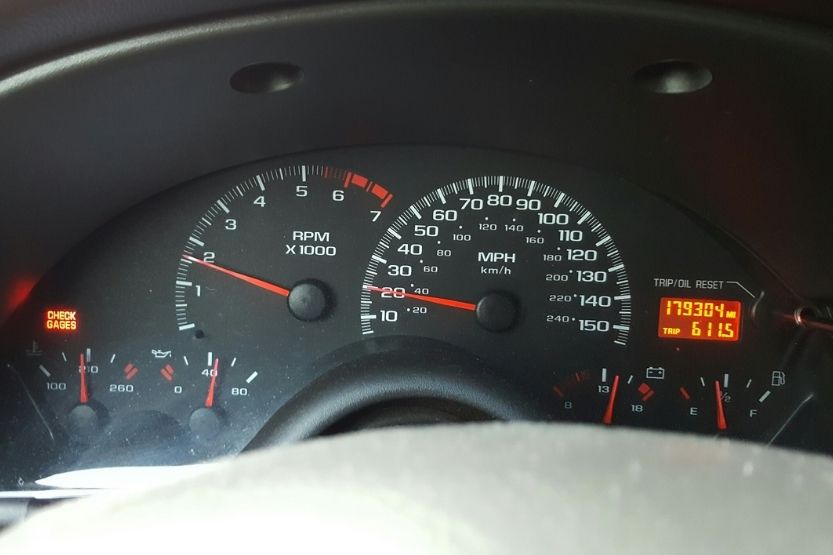
One Gauge or Two Going Out of Range
Usually, when you see the “Check Gauge” light illuminated on your dashboard, that can only mean one thing: there is one gauge or two going out of range. It could be the gauge for the engine oil, the electrical system, or one of the engine’s oil or fluids.
Gauges Monitor Car’s Component
These gauges monitor every important part and component of your car. If there is something wrong with these parts, their respective light on the dashboard will light up. But it’s going to be unproductive if you will panic when you see this light turned on.
Slow Down and Pull Over When “Check Gauge Light” Turns on
The first thing you need to do is slow down and pull over the shoulder where it is safe. Then examine the dashboard. There should be one gauge light that is illuminated. That gauge light is the one that the “Check Gauge” light is pointing at.
May Mean Different things for Different Vehicles
This “Check Gauge” or “Check Gauges” light can mean different things to different vehicle makes and models. For instance, in a Jeep, it could mean that the gauge for oil or the temperature is not reading well.
“Check Gauges” Light on Dodge Durango
On a Dodge Durango, it could mean that a gauge is malfunctioning, or perhaps a component that feeds information to a certain gauge is not doing its work. For instance, the “Check Gauge” light will turn on if there is a problem in the engine oil pressure causing gauge fluctuations.
Typically, this warning light tells you that there’s a gauge in your car operating outside of its normal parameters. It could be a Check Engine light, a fuel gauge that reads empty, a warning for Check Bulbs, or the battery/charging system.
Critical for a Smoothly Running Car
This check light is critical in making your car run smoothly. That is why it is displayed prominently on the dashboard, so you won’t be able to ignore it. If it lights up, you need to examine the instrument panel for the problem pointing out.
You need to understand that when the “Check Gauge” light comes on, it warns you that something is malfunctioning inside your car. You should stop to inspect it. If you can’t fix the problem, you need to take it to the car shop for servicing or for its needed repairs.
A Car Has Different Kinds of Gauges
Your car uses different kinds of gauges to monitor its performance. These gauges are there to tell you if there is a problem with your vehicle. The malfunctioning part of your car may be within the parameters of the gauge sensors, or they may indicate a problem with the performance of the engine, its emission system, or many other things.
Gauges Connected to a Vehicle’s Engine
These gauges are connected to metal tubing or a line coming from the vehicle component or engine to ensure that your car is running efficiently. So, the gauge system of your car that causes the warning light to come on is connected to the car parts that it measures, like the parts that measure the temperature and oil pressure.
What Is the Check Gauge Light or Check Gauges Light?
Manufacturers Installed a Set of Gauges to Monitor Car’s Components
To ensure that modern vehicles operate properly, their manufacturers install a set of gauges and lights to inform the driver what’s going on with the car. These lights and gauges will warn the driver if a car part is not functioning as it should.
One of these lights is the “Check Gauge” light. It is so important to the operation of a car that it is prominently displayed on the dashboard or the car’s instrument cluster. How it is displayed depends on the brand and model of the vehicle.
Check Gauge Light Informs Driver to Check the Gauges on the Dashboard
The important function of this “Check Gauge” light is to induce you to check the surrounding gauges on the dashboard, such as the gas, battery, and oil gauges. In other words, if this warning light turns on, it is warning you that there’s a problem with how these gauges are indicating their parameters.
Might Be a False Warning
If there are no lit gauges but just the “Check Gauge” light, it may be a false warning. Even then, you should have your car examined by a professional mechanic. They will be the ones qualified to say if there’s a part of your car that is malfunctioning.
Why the “Check Gauges” or “Check Gauge” Light Turns On
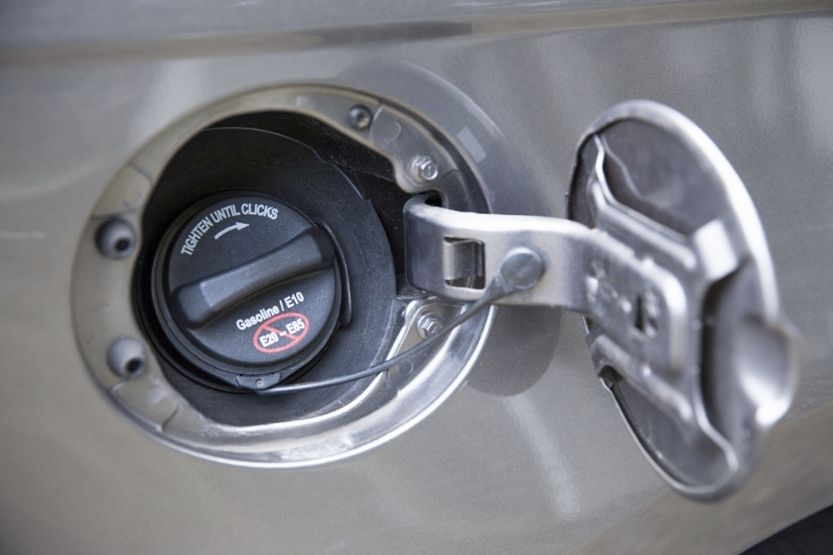
There are several reasons why the “Check Gauge” light comes on. Generally, it will turn on if there’s a malfunction that occurred and your car needs to be examined, repaired, or serviced. It could be anything from the following:
- A loose fuel cap,
- Overheated engine,
- A low engine oil level, or
- Problem in the electrical system or the engine itself.
Several gauges monitor the following:
- Brake fluid,
- Transmission fluid, and
- Other fluids that are being used by your car.
If any of these gauges are malfunctioning, it will trigger the “Check Gauge” light. Ignoring this warning light is not good for the life of your car.
Again, what does the “Check Gauge” Light mean? If you’re a driver, you may have encountered this signal. When this light turns on, you should check your car’s oil, battery, and gas gauges.
More on Car Gauges
The dashboard of your car has an instrument panel that contains several gauges. These gauges are there to warn you of potential problems that can make your vehicle inoperable.
Common Car Gauges
Your vehicle should have a minimum number of gauges neatly arranged in its dashboard. Plus, it should at least have a fuel gauge and an odometer. Most cars also have the following:
- An engine temperature gauge,
- Oil pressure gauge,
- A tachometer, and
- Voltmeter.
Fuel Gauge
These gauges are there to tell you if the part connected to it is doing its work well. For instance, the fuel gauge tells you if your tank is full or needs to fill it up. The temperature gauge tells you about the current temperature of the engine.
You always need to read these gauges because they will tell you if your car is working as it is supposed to work. If all is well, these gauges should indicate that everything is going normal. But if there’s a problem, any one of these gauges may light up. Or the “Check Gauge” light will turn on.
Modern Car’s Dashboard Show Digital Read Outs of Gauges
While there may be varying styles of gauges with different vehicle manufacturers, they are all the same. They fulfill the same functions. In modern cars, the dashboard is equipped with a screen showing digital read-outs of the gauges. The car’s onboard computer does the measurement of the parameters.
Some Common Car Gauge Readings
Here are some of the car gauge readings that you might want to know. They indicate whether your car is working well or not:
1. Temperature Gauge
Not-so-modern-cars
In not-so-modern cars, the temperature gauge needle should be in the middle of the engine is working efficiently, and the coolant is doing its job well.
Modern Temperature Gauges
Modern temperature gauges show their readings in a digital/visual manner. Typically you will see a ‘C’ and an ‘H.’ The C’ is for cold, and the ‘H’ is for hot.
2. Voltmeter
If the voltmeter of your car reads 14 to 14.5 volts, it means your car battery is in good working condition. And when the ammeter reads a bit greater than zero, your battery charging system is working well, and your battery is fully charged.
3. Oil Pressure Gauge
The oil pressure gauge should indicate a reading between 25 and 65 psi while your car engine is running. This gauge measures the resistance to the oil that is pumped by the oil pump to the engine. The oil’s viscosity, temperature, and oil type affect the amount of resistance.
What to Do When “Check Gauges” or “Check Gauge” Light Flashes?
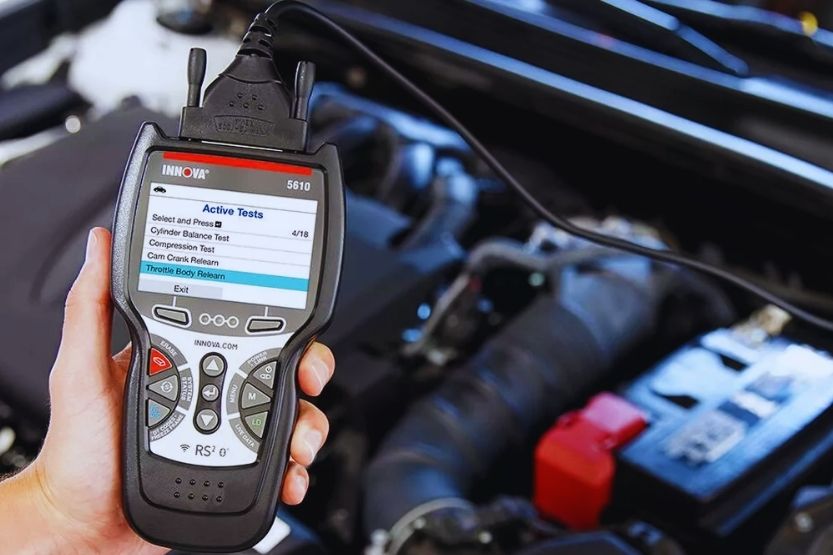
By now, you should see that there is no reason for you to panic if the “Check Gauge” light suddenly lit up on the car’s dashboard. Just pull the car over on the shoulder where it is safe. Then examine the dashboard.
Possible That Gas Is Running Out
There should be a gauge light that is lit. More likely than not, that’s the gauge that the warning light wants you to know. It could be a simple issue like your gas is running out, or the oil pressure is running low. The light that is turned on will tell you where the potential problem lies.
Perform a Scan on Your Vehicle
If you have a vehicle scanner, you can perform a scan on your vehicle. The scanner will give you the specific code where the issue has originated. It will tell you the part or component of the car that is having trouble.
Take Your Car to a Diagnostic Shop
To precisely pinpoint the problem, you need to take your car to a car diagnostic shop. They will perform a thorough scan of your car with their more powerful vehicle scanners. If they find a problem, they can also fix it because these car shops usually offer complete car repair services.
Examine All Gauges in the Dashboard
If you don’t have a vehicle scanner, examine all the gauges in your dashboard. Hopefully, you will find one that is illuminated. If there’s none, it will be safer to have your car checked by a qualified mechanic.
What Does “Check Gauge” Light Means in Different Cars?
It is just normal for different car brands to have a different orientation regarding the “Check Gauge” or “Check Gauges” light. So, here are the possible meanings of the “Check Gauge” light for different car brands:
1. GMC Envoy
Some owners say that the warning light comes on when there is an oil pressure problem. When the oil pressure goes low, this warning light will turn on.
2. Ford Explorer
They say that the “Check Gauge” light will come on in a Ford Explorer when one or more of the gauges require attention. It can be the water temperature gauge, the oil pressure gauge, the engine temperature gauge, or the fuel gauge.
3. Dodge Durango
Some say that this warning light will be lit up when you step on the breaks. They recommend checking the alternator output and the battery voltage. Their reason is that: when you step on the brakes, you will take your foot off the gas. That’s when the brake lights come on.
This process causes the voltage to drop and causes one or two of your dashboard gauges to go out of their ranges. So, the “Check Gauge” light turns on.
Conclusion: “Check Gauges” / “Check Gauges” Light – What Does It Mean?
When the “Check Gauge” light on your dashboard turns on, it can be that one or two of the gauges are going out of range. Several gauges on your dashboard monitor the different components and substances to help your car run without any problem.
So, if the “Check Gauge” light turns on, it could be that the brake fluid gauge, the engine oil gauge, the gauge for the electrical system, or any other gauge is running out of range.
You need to stop the car, park on the shoulder and make a preliminary check and troubleshooting to eliminate the check light. If you want to be safe, ask a qualified mechanic to check your car.
Related reading:
Check Fuel Cap – What Does It Mean? How to Fix?
Service StabiliTrak [What Is This Message and How to Fix It?]


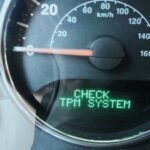
![“Check Gauges” Meaning [What Does It Mean and How to Fix] check gauges](https://roadsumo.com/wp-content/uploads/2021/11/check-gauges-150x150.jpg)
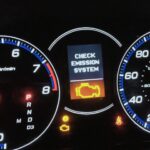
![Check Engine Light On and Off Intermittently [Causes and Fixes] check engine light on and off](https://roadsumo.com/wp-content/uploads/2021/06/check-engine-light-on-and-off-150x150.jpg)
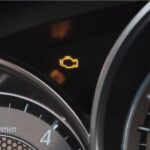
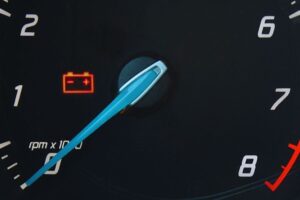
![Read more about the article Stainless Steel License Plate Screws [12 Best]](https://roadsumo.com/wp-content/uploads/2022/01/stainless-steel-license-plate-screws-2-300x200.jpg)
